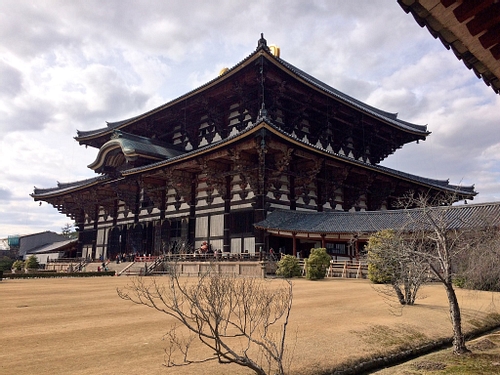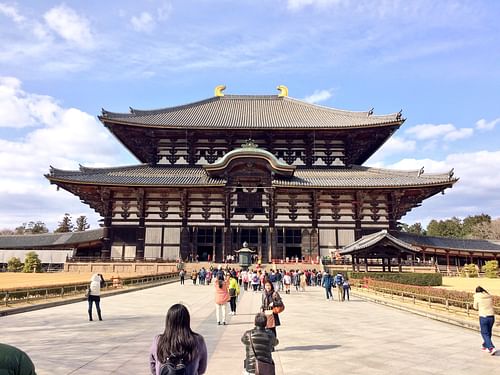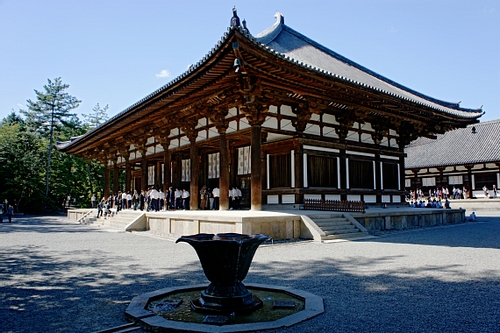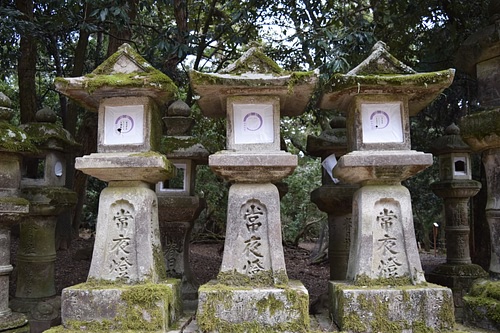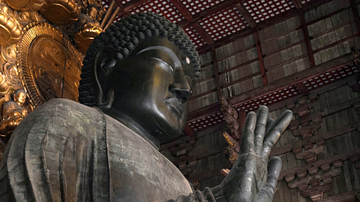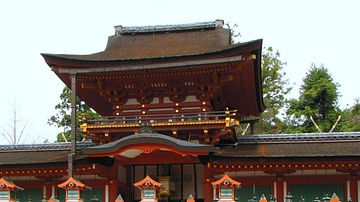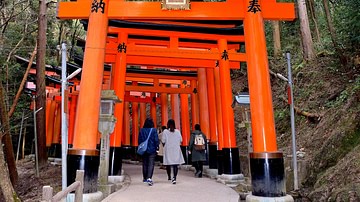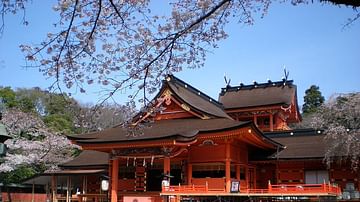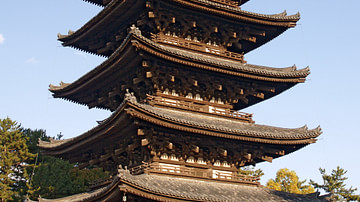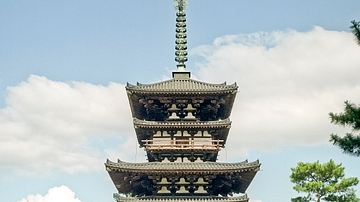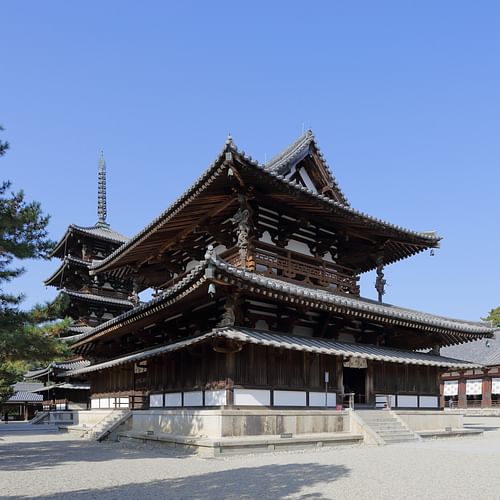
Nara, located around 30 km south of modern Kyoto, was the capital of ancient Japan between 710 and 784 CE. It gave its name to the Nara Period (710-794 CE), although the name during the 8th century CE was Heijokyo. Modelled on the Chinese Tang capital, it became an impressive city with a large royal palace, wide avenues and many important temples. Today, Nara boasts eight UNESCO World Heritage Sites, making it one of the best places to experience the architecture of ancient Japan.
A New Capital
Nara, or more correctly Heijokyo or Heijo, as it was known then, was made the capital of Japan in 710 CE during the reign of Empress Gemmei (r. 707-715 CE), although the decision had been declared in a royal edict of 646 CE. The previous capital had been at Fujiwara (aka Fujiwara-kyo), some 20 km (12 miles) to the south, but Nara had the advantage of being more centrally placed, located south of modern Kyoto, and had river access to the sea between Japan and the Asian mainland. Regularly changing capitals had, up to that time, been a feature of court life, as the royal palace and political capital were always one and the same; when an emperor died the palace was considered impure and a new location sought for. Later historians gave the new capital's name to the period 710 to 794 CE, even if for the last decade it was no longer the most important Japanese city.
Layout & Architecture
Nara was built on the Chinese model of Chang'an, the Tang capital and so had a regular and well-defined grid layout, two symmetrical halves, and the public buildings familiar to Chinese architecture. One significant difference from Chinese cities was that Nara had no city walls, even if it did have two symbolic gates: the Rashomon in the south and Suzakumon Gate in the north. Aristocrats had their own large residences, usually in Japanese style (wooden plank flooring, wooden support frames, and a shingle or thatch roof), and their size strictly determined by the social rank of their owners. With wide avenues and low-level architecture, the city would have had a very open feel. A sprawling royal palace composed of two enclosures was built, and the state bureaucracy was expanded to some 7,000 civil servants. Emperor Shomu (r. 724-749 CE) would make the palace complex even grander.
A university dedicated to the Confucian tradition was established soon after the move of capital. There, young men were trained to become officials in the state bureaucracy by learning Chinese, mathematics, and classic Confucian texts and their principles relevant to government. In 728 CE the curriculum was expanded to include Chinese literature and law.
Besides students, government officials, and court members with their household servants, the city's population was swelled by a high number of foreigners, especially from China and Korea. Perhaps 20-30% of residents were non-Japanese, settling in Nara where their skills in silk weaving, metalworking, construction, and the arts were most needed. Thus, the total population of Nara may have been as high as 200,000 by the end of the period, and it covered an area of 5 x 4 km (3.1 x 2.5 miles), much larger than its predecessor Fujiwara.
Decline
The Japanese imperial court was beset by internal conflicts for favours and positions amongst the aristocracy and Emperor Kammu (r. 781-806 CE) was also concerned about the growing influence of the powerful Buddhist monasteries around the city. Kammu, therefore, decided to move the capital to Nagaokakyo in 784 CE and then, after some inauspicious deaths at court, moved it again to Heiankyo (Kyoto) in 794 CE. This was the beginning of the Heian Period which would last into the 12th century CE, and Heiankyo would remain the capital of Japan for the next thousand years. Nara's population declined rapidly but the city would remain a place of pilgrimage thanks to its splendid temples, and although it suffered badly in the first year of the Genpei War (1180-1185 CE), restoration work was carried out soon after. Today the city remains one of Japan's prime tourist attractions for its examples of ancient art and architecture.
Architectural Highlights
Nara has many examples of ancient Japanese architecture (albeit reconstructed), including palace buildings, temples, halls, pagodas, and monumental gates. All eight sites described below enjoy UNESCO World Heritage Site status.
Heijo Palace
The Heijo Palace was founded in 710 CE and once occupied 5% of the capital's total area. The walled compound had 12 gates, and within were not just the royal residences and banquet halls but also a large number of government buildings and offices. The royal buildings were in the Japanese style of plain wood and shingle roofs while the government ones had the striking red painted wood and green roof tiles of Tang architecture. Abandoned when the capital moved, the site was neglected and even used for rice cultivation, but excavations in the mid-20th century CE revealed some of the former buildings and their foundations. Today, the site has been entirely reconstructed so that the Imperial Audience Hall, East Palace Garden, and Suzaku Gate offer visitors a pristine glimpse into the royal architecture of ancient Nara.
The Buddhist temple of Todaiji was founded near Nara in 752 CE, east of the imperial palace, hence its name 'Great Eastern Temple'. The site boasted the largest wooden building in the world at that time and covered 16 blocks of the city. The Great Buddha Hall or Daibutsuden had to be big because it contained a 15-metre (49 ft) high bronze statue of the seated Buddha, the largest such statue in the world and weighing in at around 500 tons. The Todaiji was partially destroyed in a fire during the Genpei War (1180-1185 CE) but was restored to its former glory, albeit on a slightly smaller scale but still with the new Daibutsuden housing the huge and partially restored Buddha statue and still an impressive 48 metres (157 ft) high and 57 metres (187 ft) long.
Other buildings at Todaiji include the Nandaimon (Great South Gate), Shoro (Belfry), Nigatsudo (Second Month Hall), Hokke-do (Third Month Hall), Shoso-in (Treasury) and two 100-metre (328 ft) tall pagodas, the latter unfortunately destroyed by an earthquake and never rebuilt. A large bronze octagonal lantern still standing between the Daibutsuden and Chumon Gate dates to the founding of the temple.
Kofuku-ji
The Kofuku-ji temple, meaning 'temple of happiness', was founded in 669 CE, when it was known as Yamashina-dera. The complex was the religious headquarters of the powerful Fujiwara clan and once had more than 150 buildings. Largely destroyed by fires in the late 12th century CE, it was partially reconstructed and benefitted from another rebuilding programme in 1881 CE. The star attraction is the five-storey pagoda which was first built at the site in 725 CE. Destroyed a number of times, the present structure dates to 1426 CE and, built using traditional techniques and without any nails, it is an impressive 50 metres or 164 feet tall. Other notable buildings are the East Main Hall (Tokondo), which was first built in the 8th century CE and whose present reincarnation dates to 1415 CE, the Northern Octagonal Hall, which today's version dates back to 1210 CE while the original was built in 721 CE, and the Southern Octagonal Hall, which was built in 813 CE with today's structure dating to 1741 CE. These buildings and a museum at the site all contain valuable examples of ancient Buddhist art.
Yakushiji
The Yakushiji Temple, headquarters of the Buddhist Hosso sect, was originally founded in 680 CE at Fujiwara but was relocated to Nara in 718 CE. The three-storey East Pagoda is original and rises to a height of 33 metres (108 ft), but the West Pagoda and other buildings, including the Kondo (Main Hall), Daikodo (Lecture Hall) and Toindo (East Hall), were all reconstructed in the 20th century CE after fire had destroyed the originals in 1528 CE.
Toshodai-ji
The Toshodai-ji is a Buddhist temple of the Risshu sect. Founded in 759 CE by the Chinese monk Ganjin, it boasts the largest Nara period building that has survived. This is the Main Hall or Kondo which has a distinctive facade of eight wooden columns. The site contains the burial mound of Ganjin and many important art and sacred objects - 17 National Treasures and 200 Important Cultural Properties - which include relics of the Buddha brought by Ganjin from Tang China.
Gango-ji
The Gango-ji was founded in 593 CE making it the oldest Buddhist temple in Japan. It was relocated (buildings included) from Asuka to Nara in 718 CE. The complex had seven halls and pagodas. Yet again, fire was the great enemy of Japanese architecture, and the temple was largely destroyed in 1451 CE and again in the 19th century CE. The present Main Hall or Gokurakudo, converted from the monks' sleeping quarters, does date back to the Kamakura Period (1186-1333 CE). The hall and a small pagoda are both National Treasures of Japan.
The Horyuji Temple near Nara in Japan was founded in 607 CE by Prince Shotoku and is the only surviving Buddhist monastery from the Asuka Period in its original state. The complex, consisting of 48 listed buildings including a five-storey pagoda, has the oldest wooden buildings in Japan.
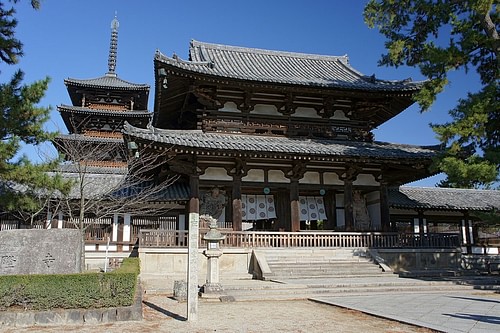
The Main Hall or Kondo (aka Golden Hall) of the complex is a two-storey wooden building, and its interior is made to resemble the Buddhist vision of paradise via brightly coloured murals on all four walls. There are 12 distinct panels, each measuring 3 x 2.5 metres (10 x 8.5 ft) and depicting scenes with the Buddha and bodhisattvas. Unfortunately, the original 8th-century CE wall paintings were destroyed by a fire in 1949 CE but have since been restored exactly. There are four heavenly guardians (Shiten-no), each standing on a prostrate demon, many bronze Buddhist sculptures, and the most important objects of worship at the site, the 623 CE Shaka Triad of the Buddha and two standing bodhisattvas.
There is also a five-storey pagoda, the Treasury or Daihozoden which contains other treasures of note such as portraits of Prince Shotoku, the Lecture Hall or Daikodo, a bell tower with a distinctive flared base and a bell from the Nara Period (710-794 CE), and the octagonal 739 CE Hall of Dreams or Yumedono which is built on the site of Shotoku's palace and contains the wooden and gold-foil statue of Kannon attributed to Shotoku and the rarely seen 'hidden Buddha' known as the Guze Kannon.
Another important Nara Period temple is the Kasuga Taisha, a Shinto shrine set in a forest east of Nara, which was officially founded in 768 CE, although historians prefer a date of 710 CE. It was established by the Fujiwara clan after, as the legend goes, a deity appeared at the site riding a deer, which also explains why deer are left to roam freely at the temple even today. The site includes a shrine dedicated to the founding ancestor of the Fujiwara. The pathway to the shrine is lined with stone lanterns donated by worshippers over the centuries. Many of these 2,000 lanterns are decorated with an image of a deer. Another 1,000 bronze lanterns hang around the shrines and gates at the site. All the lanterns at Kasuga are lit in a spectacular ceremony held each February and August.
This content was made possible with generous support from the Great Britain Sasakawa Foundation.
